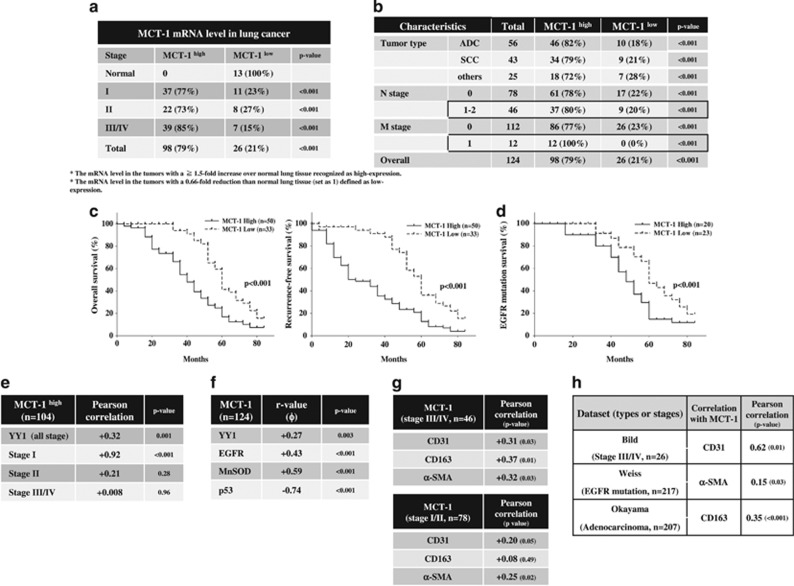Figure 7.
Clinical relevance of MCT-1 and its relationship with YY1, EGFR, MnSOD, CD31, CD163 and α-SMA in human lung cancer. (a) MCT-1 mRNA levels in lung cancer tissue (n=124) and normal lung tissue (n=13) were studied with the TissueScan arrays. The MCT-1 mRNA level in each tumor sample was normalized to the β-actin mRNA level and then calibrated to the average MCT-1 mRNA level in normal lung tissue. X2 tests were used to evaluate the significance of MCT-1 overexpression at different tumor stages compared with the normal tissue. (b) MCT-1 mRNA levels were assessed in different tumor types, in lymph node metastasis (N⩾1) and in distant metastasis (M=1) using X2 tests. (c) The correlation between MCT-1 expression levels and overall survival and recurrence-free survival (n=83) were analyzed using the Okayama dataset in the ONCOMINE database. (d) The overall survival of patients with an EGFR mutation associated with MCT-1 expression levels was analyzed in the Okayama dataset (n=43). (e) Pearson coefficient correlation defines the linkage between MCT-1 overexpression and YY1 (n=104). (f) The Phi coefficient shows the relationship of MCT-1 with YY1, EGFR, MnSOD and p53 in lung cancer patients (n=124). (g) Pearson coefficient correlation reveals the association between MCT-1 with CD31, CD163 and α-SMA in the lung cancers at stage III/IV (n=46) and at stage I/II (n=78). (h) Pearson coefficient correlation indicates the association between MCT-1 and CD31, CD163 and α-SMA in different types and stages of lung cancer in the ONCOMINE database (Bild, n=26; Weiss, n=217; Okayama, n=207).

